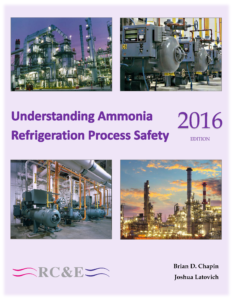Since 2011, Ammonia Refrigeration facilities with 10,000lbs. or more of Anhydrous Ammonia have been subject to ChemNEP inspections under CPL 03-00-14. OSHA has replaced this program with a new program that makes some changes:
- Merges the Petroleum and Chemical NEPs into a single Program1
- Targets EPA Risk Management Program level 1 & 2 as well as Program 3
- Requires “State Plan” adoption
The details of the new program are posted in the new CPL 03-00-021 which is available on the OSHA website or, if you use our templates, in the References section of the Google Drive shared folders. Here are some highlights of the new inspection program:
- Ammonia Refrigeration (as the sole HHC) is a “Category 1” facility which is supposed to represent 25% of all PSM inspections.
- If you have an additional covered chemical such as chlorine, the facility may also fall under “Category 4” which is supposed to represent 40% of all PSM inspections.
- Directs OSHA CSHOs to access the facility’s EPA RMP database information before the inspection.
- Inspection must include the host employer AND the contract employer
- Inspection should review ALL OSHA inspection history and abatement verification – must review last six years worth.
- Inspections will request documents are provided:
Documents Requested Prior to Identifying the Selected Unit(s):
* OSHA 300 logs for the previous three years for the employer and the process-related contractors.
* All contract employee injury and illness logs as required by 1910.119(h)(2)(vi).
* A list of all PSM-covered process/units in the complex.
* A list of all units and the maximum intended inventories of all chemicals (in pounds) in each of the listed units.
* A summary description of the facility’s PSM program.
* Unit process flow diagrams.
* Process narrative descriptions.
* Host employer’s program for evaluating contract employer’s safety information.
* Host employer’s program/safe work practices for controlling the entrance/exit/work of contractors and their workers in covered process areas.
* Emergency Action Plan; and Emergency Response Plan if the facility is also required to comply with 29 CFR 1910.120(q).
* Host employer’s program for periodically evaluating contractor performance.
Documents Requested After the Selected Units are Identified:
* Piping and instrumentation diagrams (P&IDs) including legends.
* Unit electrical classification documents.
* Descriptions of safety systems (e.g., interlocks, detection or suppression systems).
* Design codes and standards employed for process and equipment in the Selected Unit(s).
* A list of all workers (i.e., hourly and supervisory) presently involved in operating the Selected Units(s), including names, job titles, work shifts, start date in the unit, and the name of the person(s) to whom they report (their supervisor).
* The initial process hazard analysis (PHA) and the most recent update/redo or revalidationfor the Selected Unit (s); this includes PHA reports, PHA worksheets, actions to address findings and recommendations promptly, written schedules for actions to be completed, and documentation of findings and recommendations.
* Safe upper and lower operating limits for the Selected Unit(s).
* A list by title and unit of each PSM incident report; all PSM incident reports for the Selected Unit.
* Contract employer’s safety information and programs (this will be requested from the host employer after it is determined which contractor(s) will be inspected).
* Contractor employer’s documentation of contract workers’ training, including the means used to verify employees’ understanding of the training (this will be requested from the respective contractor employer(s) after it is determined which contractor(s) will be inspected).
* Other documents as specified in the Dynamic Lists.
- During the walk-around, the CHSO is to observe potential hazards including, but not limited to, pipe work at risk of impact, corroded or leaking equipment, unit or control room siting and trailer location, relief devices and vents that discharge to atmosphere, and ongoing construction and maintenance activities; and solicit input from workers / worker representatives / contract employees.
- Inspections are focused on Dynamic List questions just like the ChemNEP. Failure to correctly address the questions from the list may broaden the inspection to areas outside the questions. When CSHOs expand the inspection beyond the Dynamic List, they can pull questions from:
* Prior ChemNEP Dynamic List questions
* Old Petroleum NEP (CPL 03-00-010) questions
* CPL 2-2.45 PQV (CPL 2-2.45a) questions
* CCPS Guidelines for Hazard Evaluation Procedures, 3rd Edition
Note that this guidance specifically includes the CCPS book “Guidelines for Hazard Evaluation Procedures, 3rd Edition” which focuses on PHAs. We have long counseled using the CCPS guidance to better understand what a successful PSM program looks like from both a design perspective as well as an implementation one.
Coupled with the EPA’s announcement that they have begun implementing their enforcement initiative, there has never been a better time to consider a thorough 3rd party Compliance Audit.
